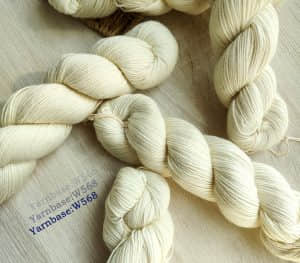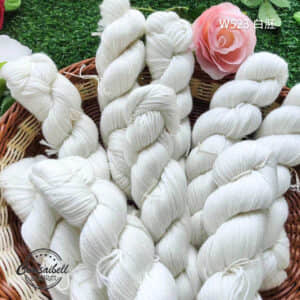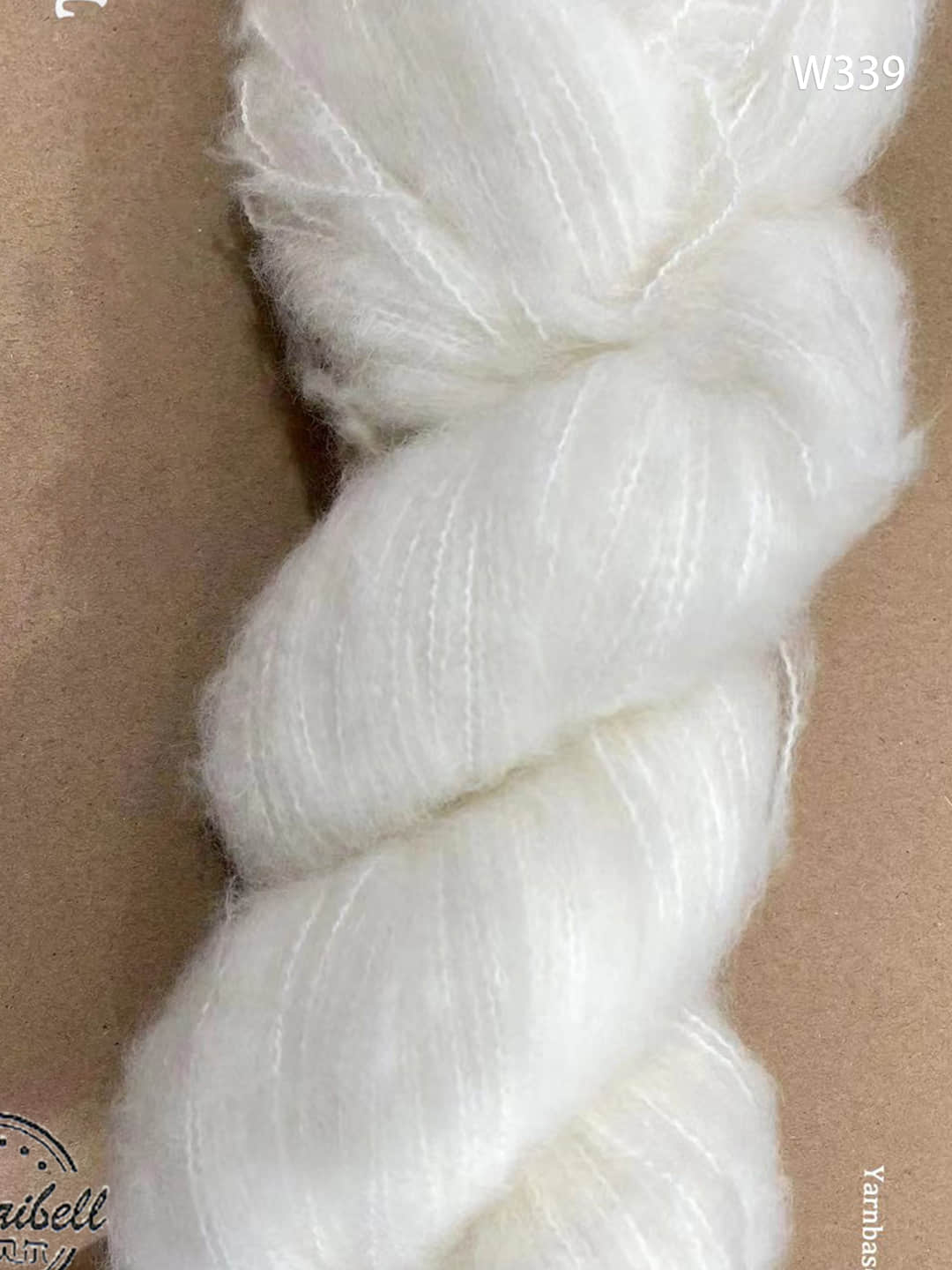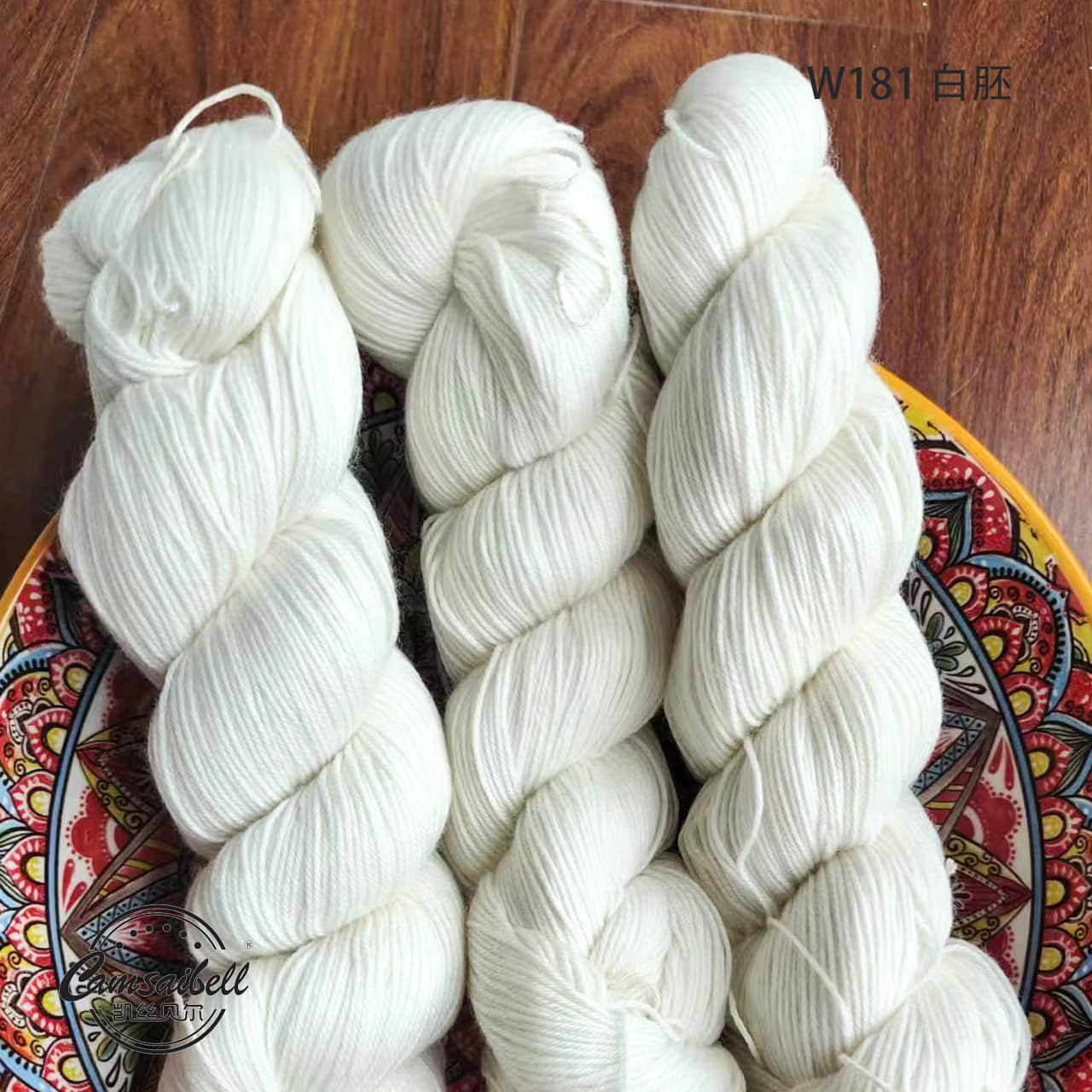- Product Name: lace yarn W447
- Composition: 50% camel, 50% silk
- Yarn spool: 766m/100g
Product advantages:
- High quality raw materials: The lace yarn W447 is made of rare camel fleece fiber. Camel fleece is mainly derived from camels. It is thin and soft, and at the same time keeps you warm and moisture-resistant and has a natural color [1].
- Excellent composition ratio: The composition ratio of the product is 50% camel and 50% silk. The mixture of camel fleece and silk makes the product have the warmth of camel fleece and the smooth texture of silk, making it have a unique tactile and visual experience.
- Yarn advantage: The yarn spool used in the W447 lace yarn is 766m/100g, which means that the length of yarn per 100 grams is 766 meters. A higher yarn count indicates that the yarn is finer, providing better textile results and texture.
Application scenarios:
- Fashion clothing: lace yarn W447 is suitable for the design and production of fashion clothing, and can be used to make high-end women’s clothing, dresses, underwear, accessories, etc. Its fine texture and the warmth of camel fleece fiber make the product particularly popular in autumn and winter.
- Household goods: This product is also suitable for making household items, such as bedding, cushions, curtains, etc. The softness and warming properties of camel fiber make it an ideal home textile material, bringing people warmth and comfort.
Characteristics of camel fleece:
- Made from camel goat hair, camel fleece is a very soft and silky fleece fabric.
- The camel fleece fabric is highly breathable and moisture-wicking, making it suitable for making warm, cold-weather clothing.
- Camel fleece is moderately warm, not as good as traditional wool, but its soft and delicate properties make it suitable for clothing that is directly close to the skin, such as underwear and undershirts.
- Camel fleece has a certain degree of elasticity and ductility, making it suitable for making clothing that requires elasticity.
- Camel fleece blows easily and requires special care.
- Camel wool was first produced in Kashmir and the Gobi Desert. Today, China is the largest exporter and producer.
- Camel fleece is commonly used to make sweaters, hats, dresses, shirts, socks, underwear, warm clothing, socks, scarves, blazers, gloves, etc.
Maintenance details:
- Gentle cleaning: camel lace usually requires hand washing or dry cleaning to avoid damage to the fine lace and fibers. Please follow the washing instructions on the garment, use mild detergent, and gently scrub.
- Avoid soaking too long: Don’t let camel lace soak in water for too long to avoid damaging the fabric and lace details. Keep the cleaning time as short as possible and rinse quickly.
- Gently scrub: When cleaning, gently scrub the lace part with your fingers, avoiding using a rough brush or rubbing. Gently massage the lace to remove stains and grime.
- AVOID DIRECT SUN EXPOSURE: Camel lace should be kept away from direct sunlight for extended periods of time, as sunlight can cause color fading and fiber damage. Best to dry in a cool, ventilated place.
- Avoid using hot water and drying: Avoid using hot water washing or drying to treat camel fleece lace, as high temperatures may deform or shrink the fabric. It is best to wash it in cold water and lay it flat to dry.
- Be careful to prevent chafing: camel lace is susceptible to friction and stretching, so be careful when wearing and storing. Avoid contact with rough surfaces or sharp objects to prevent damage to the fabric.
- Store properly: fold or hang the camel lace separately to avoid squeezing it with other clothing. It’s best to hang with cotton hangers to maintain the shape and silhouette of the garment.
- Regular inspection: Check the details of the camel lace regularly, such as the lace edge and decoration, to ensure that it is not loose or damaged. If problems are found, fix them promptly to prevent further damage.










